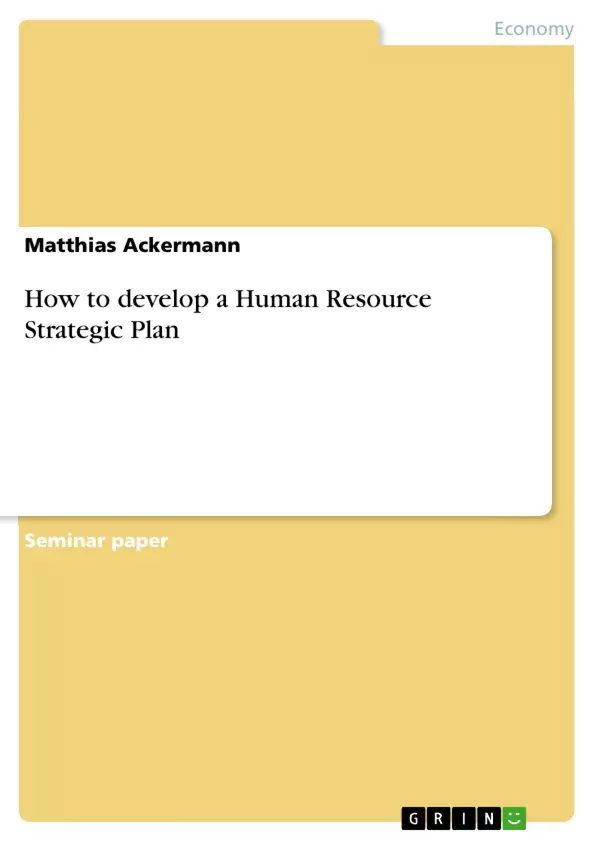The recession in 2008/09 illustrated for some companies the weakness in the marketplace that led to lower company valuations, increased business failures, outsourced businesses of companies, and sell offs of noncore business units. But if the organizations think forward they find opportunities that were not available when business was booming, such as expanding their company through acquisition. Eventually companies always need to look forward to stay competitive, capture market share, and be the first to innovate a new product or service (Mondy 2014, p.115).
Organizations use strategic planning as a constantly changing and ongoing process in order to find a competitive advantage. They see the need to diversify and increase variety of goods that are made or sold. At other times companies have the requirement to downsize in response of the external environment or the strategic plan sees integration as their driving force, what means the unified control of a number of successive or similar operations. Therefor strategic planning endeavours to position the organization regarding external environment. Thus strategic planning at all levels of organization is important (Mondy 2014, p.115). To anticipate future business and environmental demands on the company, strategic planning in human resource (HR) is necessary to meet the personnel requirements dictated by those conditions (Lengnick-Hall 1988, p. 457). Hereby the strategic management process is used to answer a central question in HR strategy planning: ‘How to develop a human resource strategic plan?
Inhaltsverzeichnis (Table of Contents)
- Introduction
- Problem and Objectives
- Procedure of Seminar Paper
- Defining the Terms
- Human Resource Management (HRM)
- Strategic Human Resource Management (SHRM)
- Human Resource Strategic Planning
- Strategic Management Process (SMP)
- Hierarchy of Strategy
- Short Introduction of Audi AG
- How to develop a Human Resource Strategic Plan
- Determination of the Organization's Business Strategy
- Assessment of the Organization and its Environment
- Setting of specific Objectives and formulating the Strategy
- Implementation of Strategies to accomplish the Objectives
- Evaluation & Control of the Strategies
- The human resource strategic plan (example of Audi)
- Conclusion and Outlook
Zielsetzung und Themenschwerpunkte (Objectives and Key Themes)
This working paper aims to explain the development of a Human Resource Strategic Plan (HRSP) using the Strategic Management Process (SMP) and provide practical examples from Audi AG. The main objective is to demonstrate the importance of HR strategy in achieving organizational goals.- Defining Key Terms: The paper begins by defining critical terms like Human Resource Management (HRM), Strategic Human Resource Management (SHRM), and HRSP. It then explores the SMP in detail.
- Strategic Management Process (SMP): The paper presents a step-by-step guide to developing an HRSP using the SMP, which involves determining the organization's business strategy, assessing its environment, setting objectives, implementing strategies, and evaluating their effectiveness.
- Practical Examples: The paper utilizes Audi AG as a case study to illustrate the practical application of HRSP development. It examines the organization's strategic approach to HR, including their corporate responsibility program and talent management practices.
- Importance of HR Strategy: The paper emphasizes the crucial role of HR strategy in supporting an organization's overall business strategy and ensuring that its human resources are effectively aligned with its strategic objectives.
- Integration of HR and Business Strategies: The paper explores the integration of HR strategy with the company's overall business strategy, highlighting how HR can contribute to achieving organizational goals and maintaining a competitive advantage.
Zusammenfassung der Kapitel (Chapter Summaries)
The introductory chapter discusses the importance of strategic planning for organizations, highlighting the role of human resource (HR) strategy in anticipating future demands and meeting personnel requirements. It presents the central question addressed in the paper: "How to develop a human resource strategic plan?" and outlines the structure of the working paper. The subsequent chapter defines key terms like Human Resource Management (HRM), Strategic Human Resource Management (SHRM), HRSP, and SMP. The SMP, a central element of the paper, is presented as a systematic approach for long-term planning and taking actions to achieve organizational performance goals. The following chapter provides a detailed explanation of how to develop a human resource strategic plan (HRSP) using the Strategic Management Process (SMP). This chapter encompasses key steps including:- Determination of the Organization's Business Strategy
- Assessment of the Organization and its Environment
- Setting of specific Objectives and formulating the Strategy
- Implementation of Strategies to accomplish the Objectives
- Evaluation & Control of the Strategies
Schlüsselwörter (Keywords)
The primary focus of this paper is on strategic human resource management, encompassing key concepts like human resource strategic planning, strategic management process, and competitive advantage. The paper emphasizes the integration of HR strategy with the overall business strategy, utilizing practical examples from Audi AG to demonstrate the implementation of HRSP in a real-world setting.- Citation du texte
- Matthias Ackermann (Auteur), 2014, How to develop a Human Resource Strategic Plan, Munich, GRIN Verlag, https://www.grin.com/document/284172



